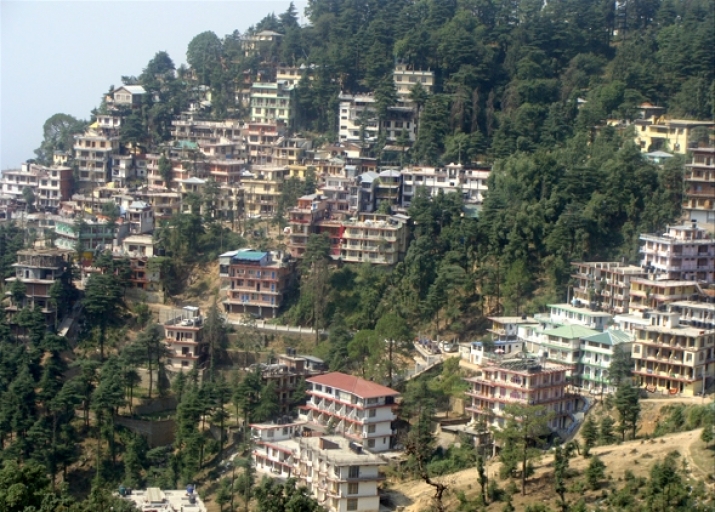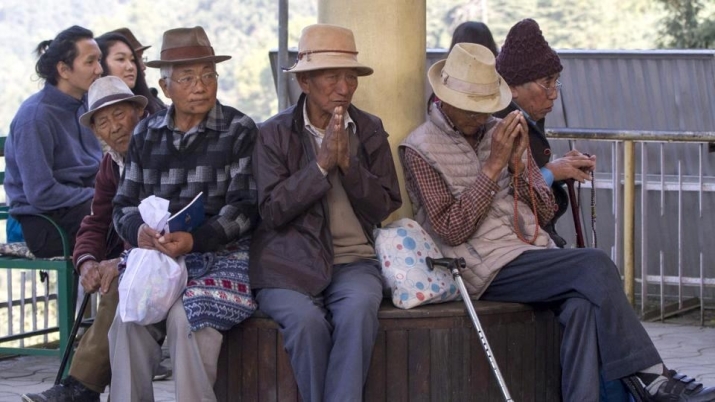NEWS
Tourism Boom Threatens to Turn “Little Lhasa” into a Concrete Jungle
 From solobackpacker.com
From solobackpacker.comMcLeod Ganj a suburb of the city of Dharamsala in the northern Indian state of Himachal Pradesh, is probably best known for its large population of Tibetan refugees and as the home to the headquarters of the Tibetan government-in-exile and the official residence of His Holiness the Dalai Lama, all nestled in the embrace of the Dhauladhar mountain range. However, this once tranquil oasis in the southern Himalayas is rapidly being overrun by new construction projects seeking to cash in on the burgeoning tourism industry that has flourished in the region in recent years.
During the days of British rule in India, the town serves as a cantonment and hill station where British residents would retreat to seek refuge from the sweltering summers that would suffocate the lowlands. Nowadays the town, sometimes dubbed “Little Lhasa” as it is considered by many to be the political, cultural, and spiritual center of the Tibetan diaspora, is home to some 16,000 exiled Tibetans and a similarly sized population of Indians.
“It was once a small village of shepherds. Now you can see a concrete jungle all over,” local resident Joginder Singh remarked to the Hindustan Times, observing that much of the commercial activity in the area was the result of people and businesses cashing in on the tourism boom.
Among the most significant sites to Buddhists, is Tsuglag Khang, housing statues of Shakyamuni Buddhia, the boddhisattva Avalokitesvara, and Padmasambhava, or Guru Rinpoche, Namgyal Monastery, the Library of Tibetan Works and Archives, and Gangchen Kyishong—the offices of the Tibetan government-in-exile.
“McLeod Ganj has lost its British colonial charm of Gothic-style of architecture in buildings and letter boxes in cylindrical and pillar shapes,” said octogenarian Naresh Chauhan, who has lived in McLeod Ganj since childhood, and can remember the virtually uninhabited settlement that existed before the arrival of refugees fleeing persecution in Tibet that began in 1959. (Hindustan Times)
Compounding the impact of the flourishing commercial activity that targets the steady influx of domestic tourists and visitors from overseas—a combination of Buddhist pilgrims, Tibet enthusiasts, scholars, backpackers, mountain climbers, and the occasional Hollywood celebrity—is the town’s location in the middle of an active seismic zone
Chauhan noted that in days gone by, most buildings were fashioned out of adobe and stone, which, while crude, were practical and suited to the local environment. “Such structures are liable to suffer partial damage in the wake of quakes. Now most of them are concrete and may have ignored the traditional practices of seismic proofing, such as dhajji* and [the] incorporation of wooden beams,” he noted. (Hindustan Times)
Local records at the nearby Wadia Institute of Himalayan Geology, an autonomous research institute under the Indian government, indicate that several quakes have struck the region since the 7.8 magnitude earthquake of 1905 that destroyed much of the town and claimed more than 20,000 lives—among them, a magnitude 5 quake in 1978 and a 5.7 magnitude temblor in 1986.
“When the devastating quake occurred in 1905, there were hardly any multistoried structures in this region. If an earthquake with the similar magnitude reoccurs, there would be colossal loss to both life and property,” warned local resident Umaid Singh, who witnessed the 1986 earthquake. (Hindustan Times)
 Tibetans-in-exile pray at Tsugla Khang Temple in McLeod Ganj. From hindustantimes.com
Tibetans-in-exile pray at Tsugla Khang Temple in McLeod Ganj. From hindustantimes.comAn official from the Wadia Institute of Himalayan Geology admitted that the majority of the new structures that are springing up around McLeod Ganj do not adhere to local regulations or meet standards that reflect the seismic risks present in the area. “McLeod Ganj and its nearby villages fall in the highly-sliding zone,” he said. “The construction of multistoried buildings is not advisable in this area.” (Hindustan Times)
* A traditional constriction technique of timber frames with stone and earth infills that provides structural resistance to earthquakes.
See more
Dalai Lama’s abode turning into a concrete jungle (Hindustan Times)
Related news from Buddhistdoor Global
Twenty Tibetan Nuns Make History by Passing Geshema Degree
Dalai Lama Concludes “Tree of Faith” Teaching to over 3,000 Students
Dalai Lama Gives Blessing as Thai Monks March for World Peace in Northern India
Annual Geshema Examinations Held in Dharamsala
Shugsep Nunnery Celebrates Fifth Anniversary
Related features from Buddhistdoor Global
Losar around Dharamsala
Dongyu Gatsal Ling Nunnery
The Norbulingka Institute: The Safekeeping of Tradition














